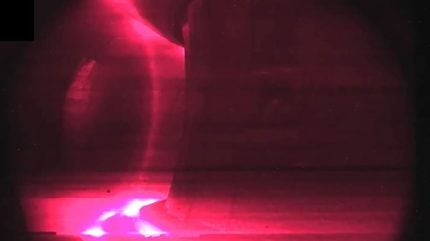
Scientists have set a new record for generating and sustaining ultrahot plasma, the essential component for nuclear fusion, at the WEST tokamak reactor in Cadarache, France, bringing the technology that much closer to the world-changing ambition of harnessing energy from hydrogen atom fusion.
On 12 February 12 the tokamak was able to maintain a hot plasma for 22 minutes and 17 seconds. During the test, the plasma reached a temperature of 50 million degC (90 million degF), which is around three times as hot as the Sun’s core.
The previous plasma duration record of 1,066 seconds, or 17 minutes and 46 seconds, was achieved in January 2025 by China’s EAST Tokamak. That means WEST, operated by Commissariat à l’énergie atomique et aux énergies alternatives (CEA), has achieved a significant 25% improvement in plasma duration time of 4 minutes and 29 seconds.
The development is a major milestone because fusion generators like the International Thermonuclear Experimental Reactor (ITER), currently under construction in southern France, will depend on the ability to maintain plasmas for long periods of time.
“This leap forward demonstrates how our knowledge of plasmas and technological control of them over longer periods is becoming more mature, and offers hope that fusion plasmas can be stabilised for greater amounts of time in machines such as ITER,” said the CEA in it’s official statement.
To achieve fusion in the absence of the sun’s intense gravity to contain the reaction tokamaks have to generate temperatures much higher than those of the star’s core in their torus shaped plasma chambers. When operational, the ITER Tokamak will generate temperatures of 150 m degC, ten times the temperature of the sun’s core, which requires a great deal of energy, a primary challenge in the use of tokamaks, if they are to produce more energy from fusion than has to be put in to create it. Hence the need to keep the plasma stable for long periods while ensuring that all plasma-facing components of the tokamak are able to withstand its radiation.
“WEST has achieved a new key technological milestone by maintaining hydrogen plasma for more than twenty minutes through the injection of 2 MW of heating power,” said Anne-Isabelle Etienvre, director of Fundamental Research at the CEA. “Experiments will continue with increased power. This excellent result allows both WEST and the French community to lead the way for the future use of ITER.”
The next steps for the CEA and WEST will be to double down on its plasma duration record by sustaining this ultra-hot gas for periods reaching a few hours.





